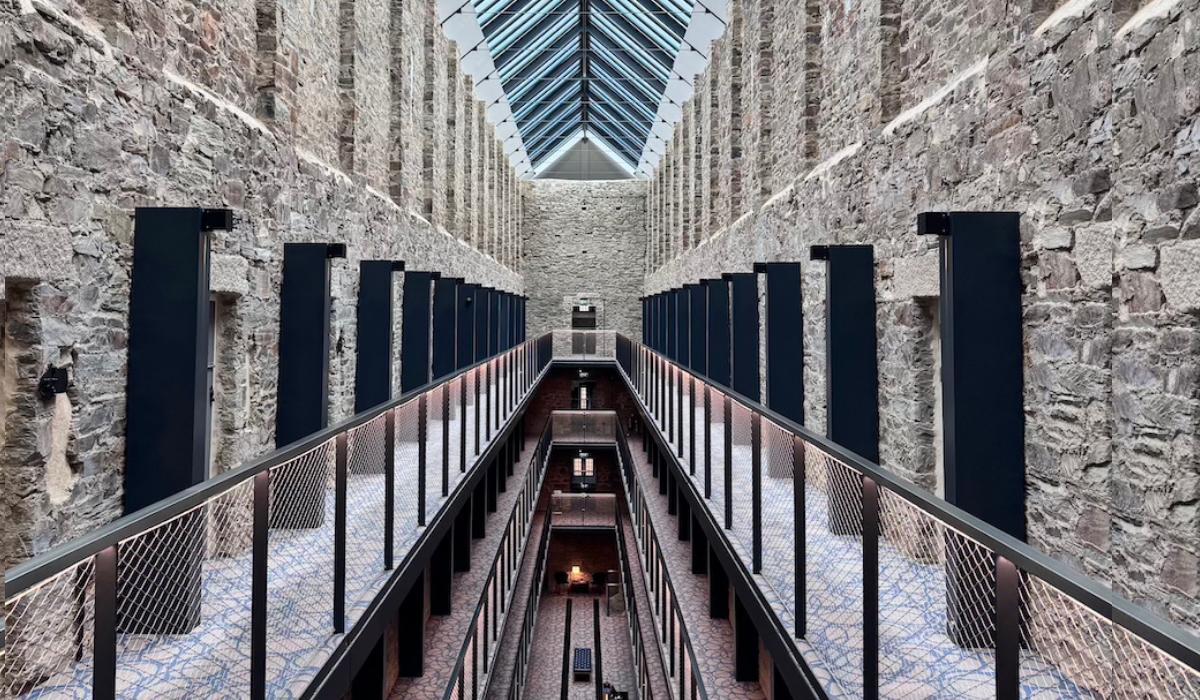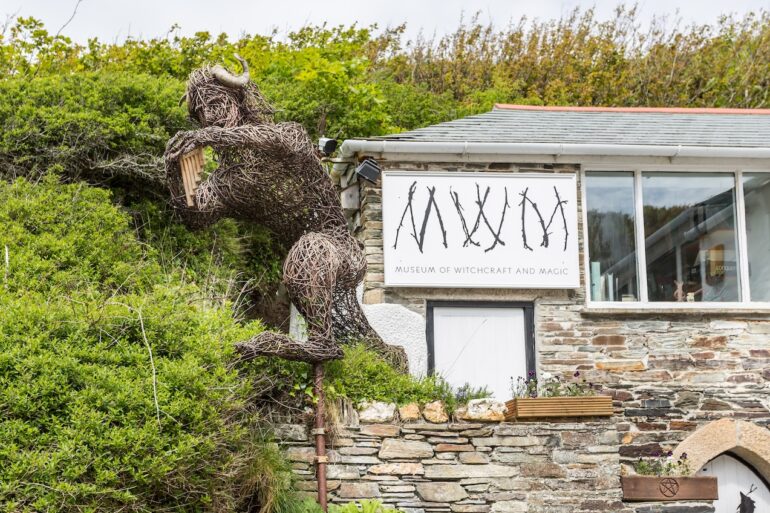In Cornwall, the 18th-century Bodmin Jail has transformed into a luxe hotel steeped in stories of hangings and hauntings.
“Jail” and “luxury” are words you wouldn’t normally pair up—until you spend a night at the Bodmin Jail Hotel in Cornwall, England. This 4-star luxury hotel with impeccable rooms, a bar, fine dining restaurant, and café used to be a jail. To be more specific, it was the formidable 18th-century prison called Cornwall County Gaol, and later renamed to Bodmin Jail.
Yes, it’s haunted. And it’s easy to believe it is with its rich and grim history worthy of a Netflix documentary. Call it morbid fascination, but the Bodmin Jail Hotel falls in the top three of my most interesting hotel stays. Having worked in hospitality myself for the last 15 years, my fascination was more than from a guest’s perspective.
The work and thought that went into its development, the preservation of details that could only be done by people who deeply love the property, the sober and careful respect of its history, the sheer amount of attention it takes to run a unique property like Bodmin Jail are, for a hotelier like me, heartachingly beautiful. The hotel is art, history, and hospitality all rolled into one.
Gallows and ghosts
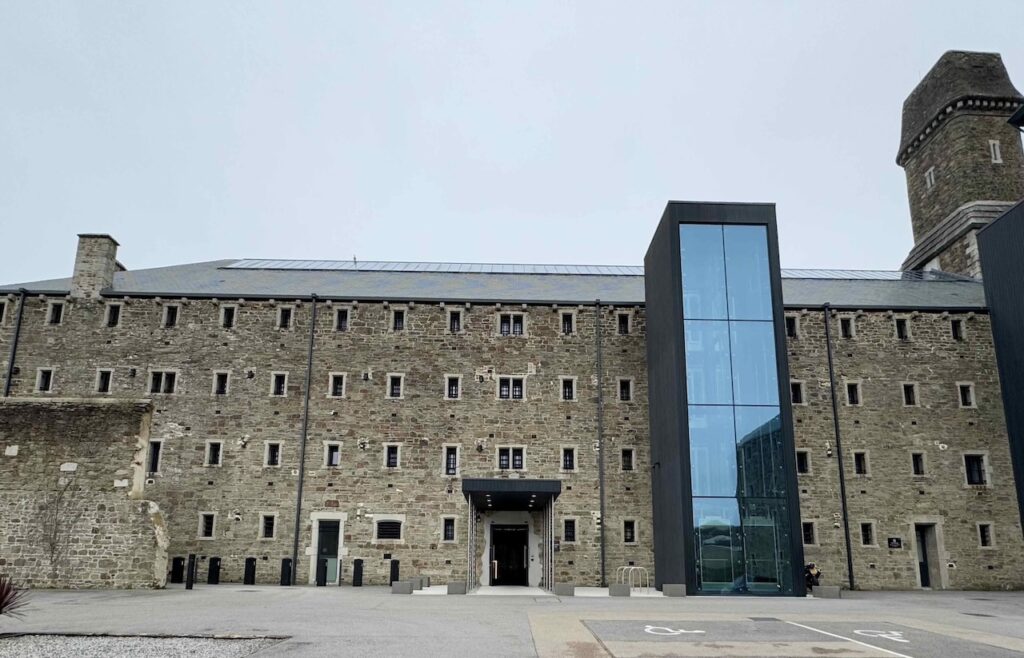
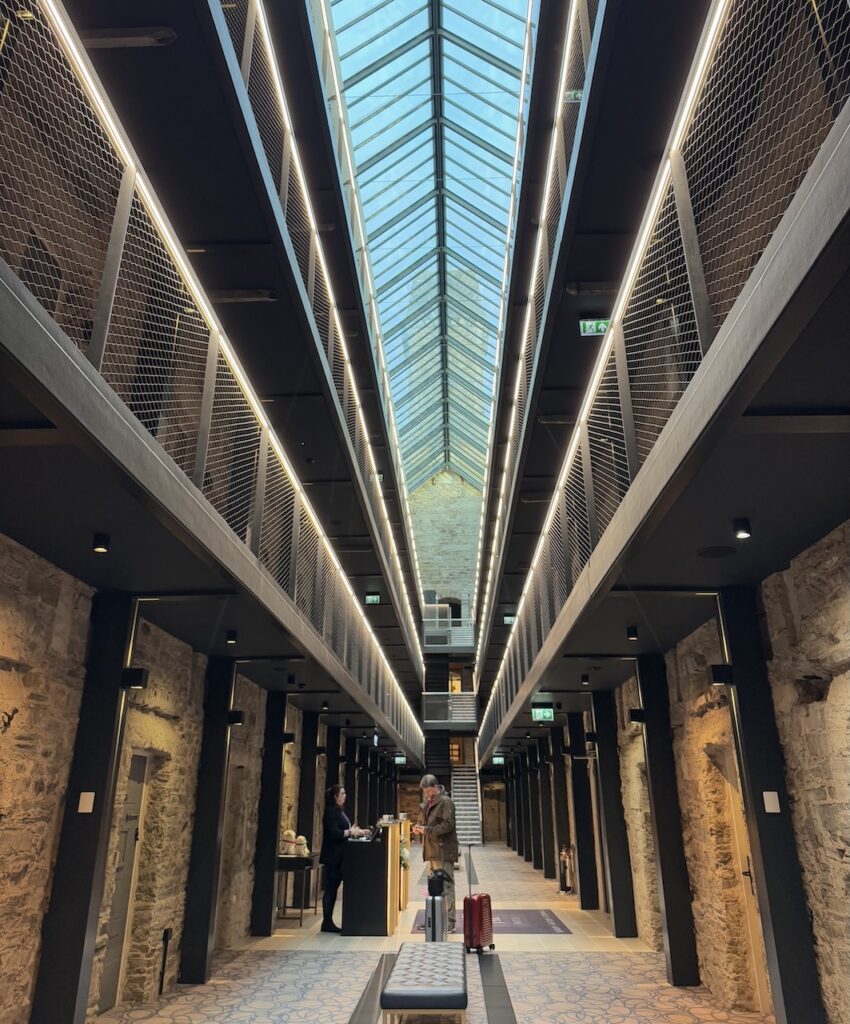
There were 80 recorded executions in Cornwall from 1735 to 1909, 60 of which were facilitated by Bodmin Jail.Today the hotel carries the tagline: “Luxury. History. Cornwall.” This seems like an oversimplification, given that the property still has one of its original hanging pits, which you’ll see within its sister attraction, the Bodmin Jail.
My husband knows my fondness for exploring interesting places, but even I was apprehensive when he surprised me with the booking details for the Bodmin Jail Hotel. Growing up Asian, superstition is embedded in our DNA, and the thought of sleeping in a former prison cell, in one of Cornwall’s oldest historical towns, did not sound relaxing at all. Plus, the hotel sitting beside the rugged and wild Bodmin Moor further fueled my imagination.
Most (not all!) of my fears of the paranormal were dashed when we stepped into the sleek interiors of the hotel. It reminded me of a set in John Wick: exposed granite walls, metal rails, dramatic lighting.
We were later told that each room comprises three former prison cells, but now each one has the trappings of a luxe property: a plush bed, a well-stocked mini-bar, and a spacious bathroom that belongs in a Pinterest board.
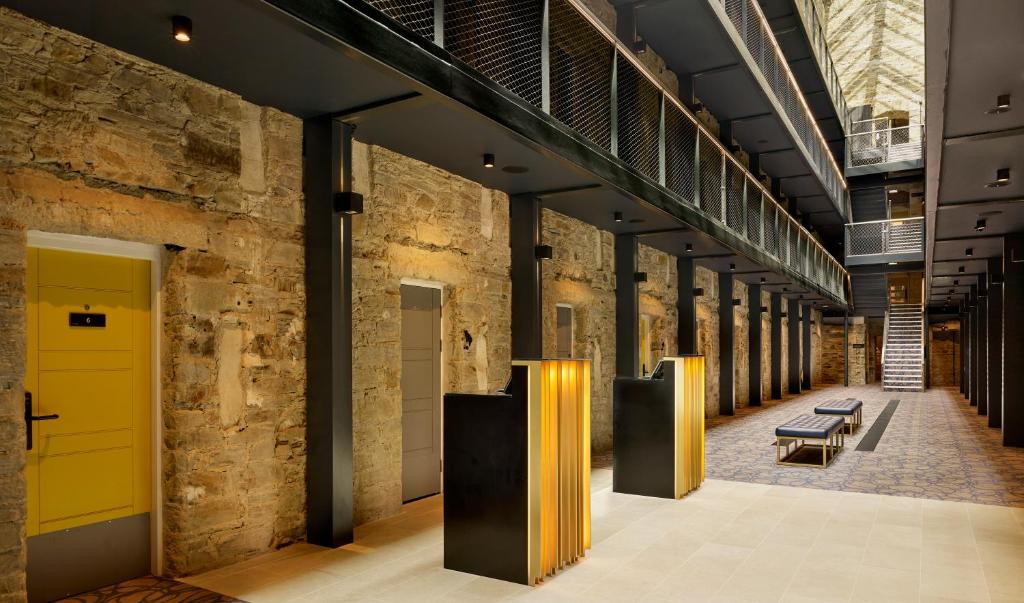
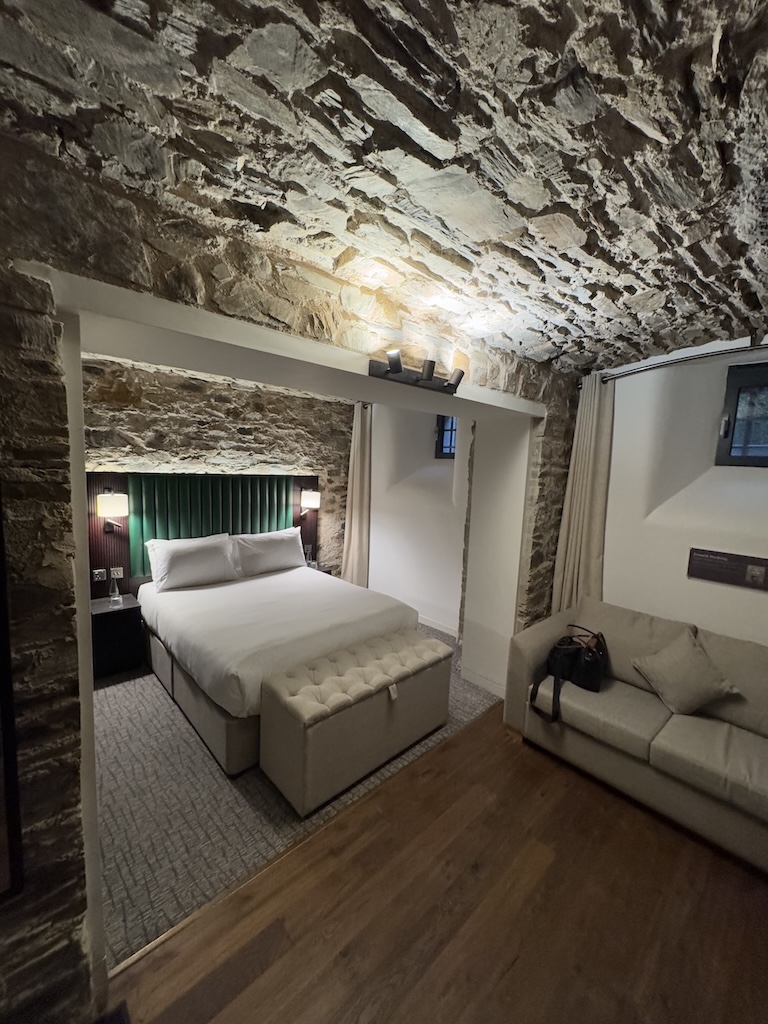
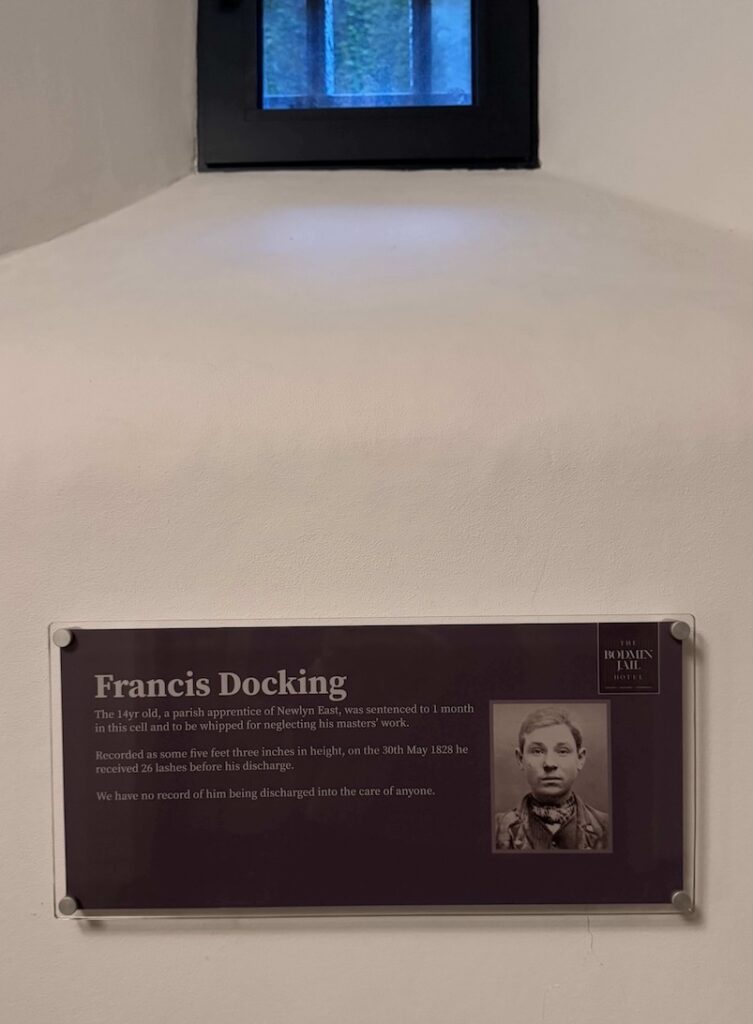
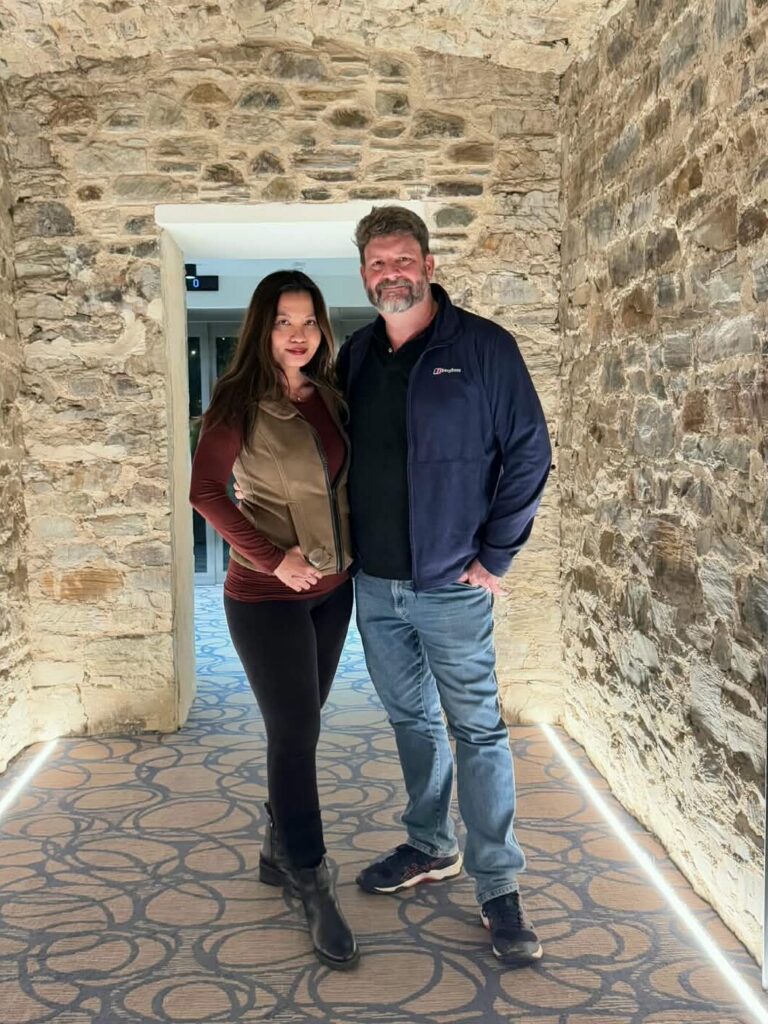

High up on the wall of our room is a small window with grills; below it, a plaque with a picture of a young boy, Francis Docking, 14 years old, “a parish apprentice who was sentenced to 1 month in this cell and to be whipped for neglecting his master’s work. Recorded as five feet three inches in height, on the 20th May 1828 he received 26 lashes before his discharge.”
The hotel’s assistant general manager, Wilson Koh, later explains that rooms were meticulously connected to its occupants of the prison. “We went through the archives to connect some of the hotel rooms to their historical significance, incorporating stories where possible—though we avoid the more gruesome ones.”
Thank you for that information, Wilson.
Related story: The top 10 scariest Asian horror films of all time
Related story: REVIEW: ‘The Conjuring: Last Rites’ is a reheated casserole of horror clichés
The Chapel and Champagne Bar
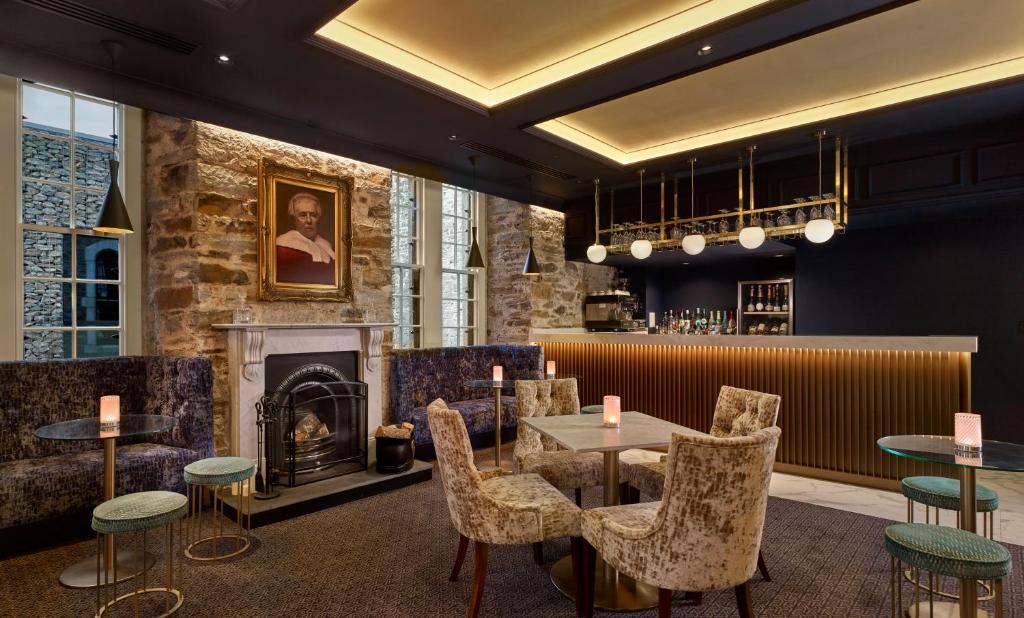
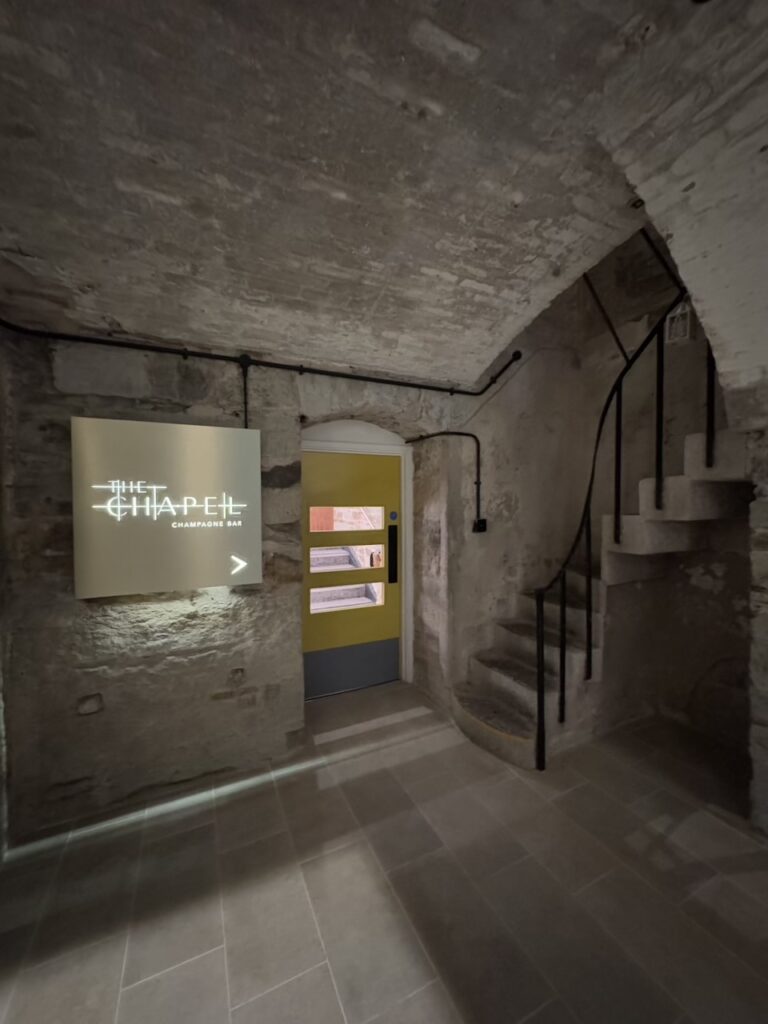

To get there, you’ll pass by the condemned cell, where the doomed prisoners were kept until their execution date. The hallway to the bar is called the Deadman’s Walk, where prisoners made their way to the hanging pit.
At the end of the hall is another sign to commemorate where a hanging pit for private executions used to be. Behind that wall? The present-day staff lift. Wilson laughingly shares he only takes the lift going up. I took around four or five photos of that wall, and they all came out blurred; even the plaque was unreadable.
The Champagne Bar is intimate, fashionably dark, and moody, and kept up with the property’s theme with a miniature mechanical “hanging” at the bar. It was winter when we arrived, so the fireplace was crackling while we sipped our drinks.
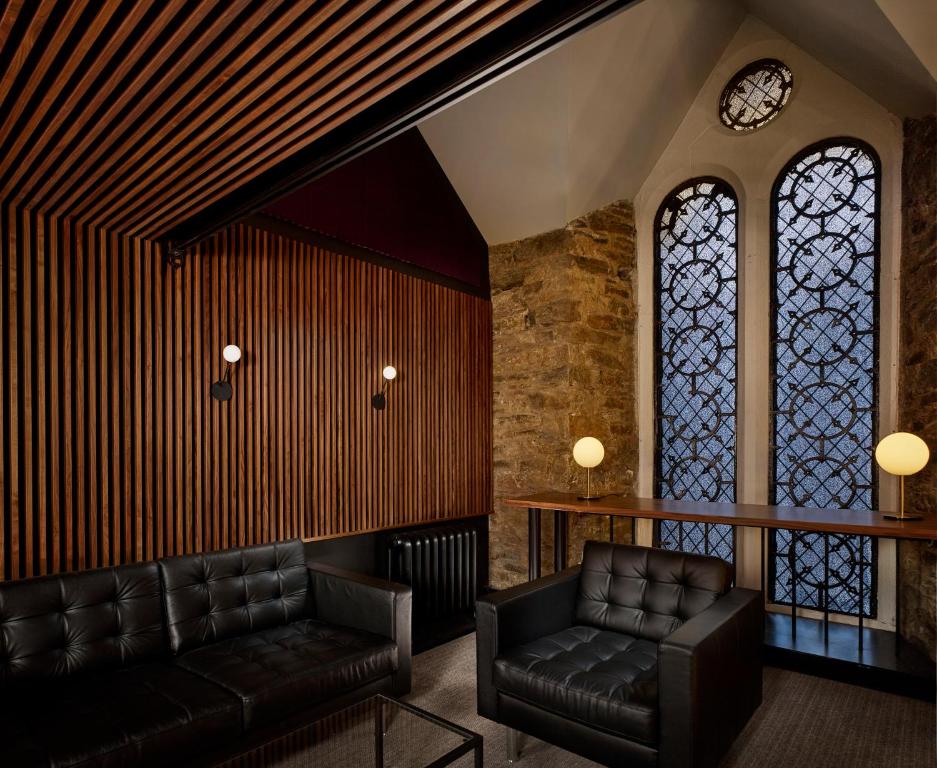



After drinks, we headed to the hotel restaurant, aptly called The Chapel. It used to be the prison chapel, but in the 1930s, it was a nightclub and casino called the 99 Club. It is cavernous and gorgeous, still with its dramatic original stonework and Victorian features. The dining experience showcased its proud Cornish heritage, using locally grown and sourced ingredients.
Maintaining a historic property comes with unusual challenges. Wilson shares, “There are times when cracks appear and we can’t always investigate because the external walls are so thick.” Napoleonic prisoners of war built the jail, using 20,000 tons of granite quarried from Bodmin Moor. Granite is notorious for being strong, with the property owing much of its survival to its near indestructibility.
Near the end of its lifetime, the jail was bought to be stripped and sold for its granite. Attempts at demolition using dynamite failed. Evidence of this is still visible on the ground floor of the hotel, near the front desk where the hotel cordoned off the area of the original demolition site.
The hotel works closely with the English Heritage Society for any modifications that must go through an approval process. Preservation remains a priority, and the walls remain mostly untouched, so systems—like the HVAC pipes—are not hidden inside the walls because that would require cutting into the historic structure.
Related story: Chele Gonzalez and Santiago Fernandez map landscapes and memories on their plates
Related story: Sapa: A surprising destination in northern Vietnam
Related story: How the manager of the No. 1 resort in PH worked his way up from the laundry room
Dark tourism
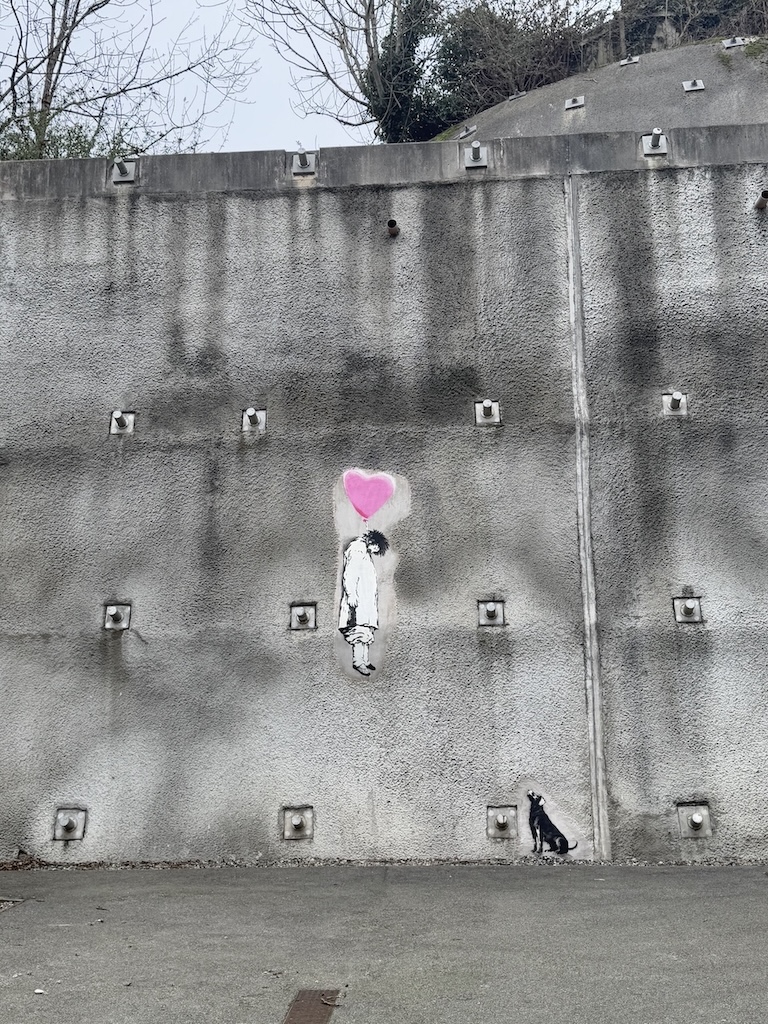
The emergence of dark tourism has seen the hotel welcome thrill-seeking guests who are fans of the paranormal. “We’ve had guests from all over the world who come hoping to experience something supernatural” says Wilson.
Guest reports of paranormal activity are a regular occurrence. This was when my husband and I discovered that our table at breakfast was reported for paranormal activity the previous day and was caught in the CCTV. Fun.
Wilson took us to the top floor where it was deathly quiet and pointed at one room. They say that room has a lot of energy. A guest staying there right now specifically requested it.”
Guests are also in for a surprise when they explore the grounds. Turn right into the staff parking lot, and you’ll be greeted by disturbing street art—a depiction of a girl with a hot pink balloon with its string tied around her neck with a little dog looking up at her mid-float.

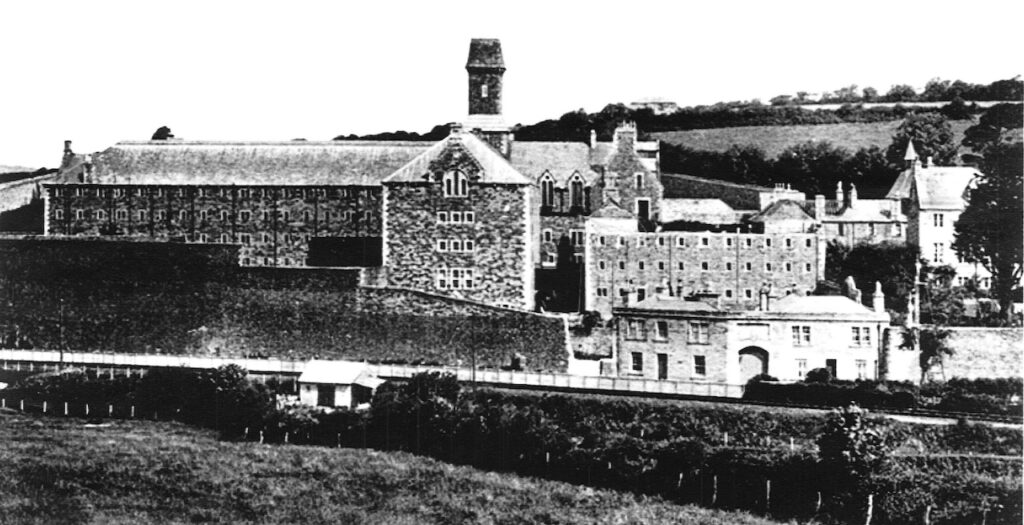
The style looks suspiciously Banksy. Wilson explains “We can’t confirm whether it’s Banksy or not. One morning, our staff arrived to find the artwork in our parking lot. They rushed in to tell the general manager, thinking the hotel had been vandalized.”
While the hotel is already steeped in history, the best way to learn more about the Bodmin Jail is through its sister attraction. This interactive museum is not for the faint-hearted as it reveals the more gruesome and graphic side of the jail.
Fair warning: the guide confirmed that people who are sensitive to energy have fainted.
Enlightened history, conservation
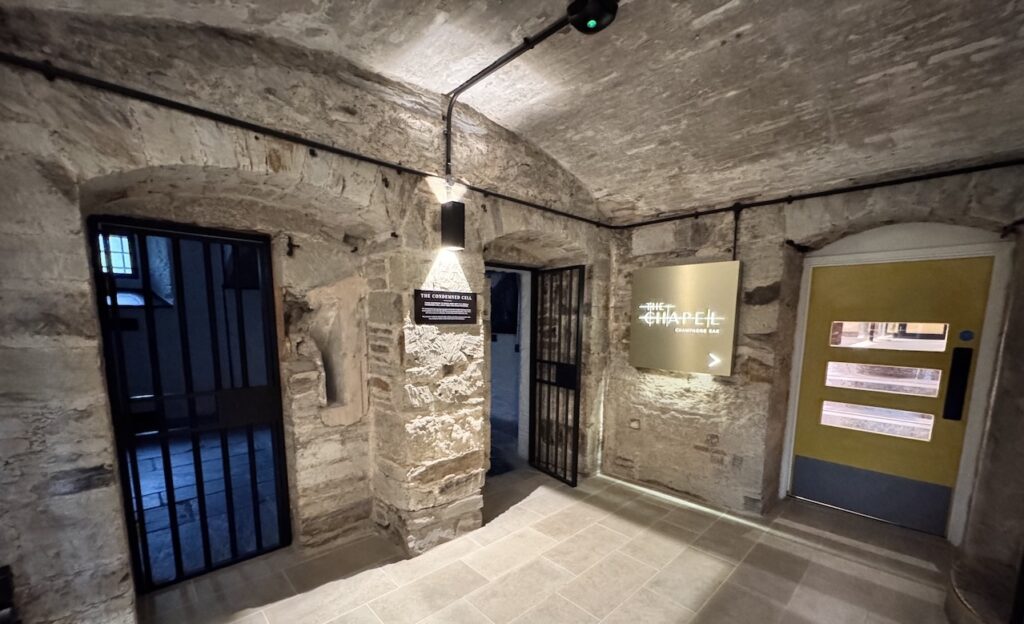
In 1779, military engineer Sir John Call built the Bodmin Jail on the premise that “we can do better.” Before its construction, conditions in prisons were unsanitary and overcrowded. Men, women, and children were forced to huddle in cramped quarters. Yes, children were also imprisoned.
Bodmin Jail was the first of its kind that was built to be livable and gave a sense of dignity to its occupants. It had proper ventilation and running water. Prisoners had their own cells. Men were separated from women and children. Prisoners were paid for their labor in jail.
Rehabilitation was kept in mind in its design. Prisoners could literally work their way up. Tom, our knowledgeable and engaging guide at the museum, shared that well-behaved prisoners were gradually transferred to higher floors where they could enjoy sunlight. A symbolic move that offered hope for release from prison.
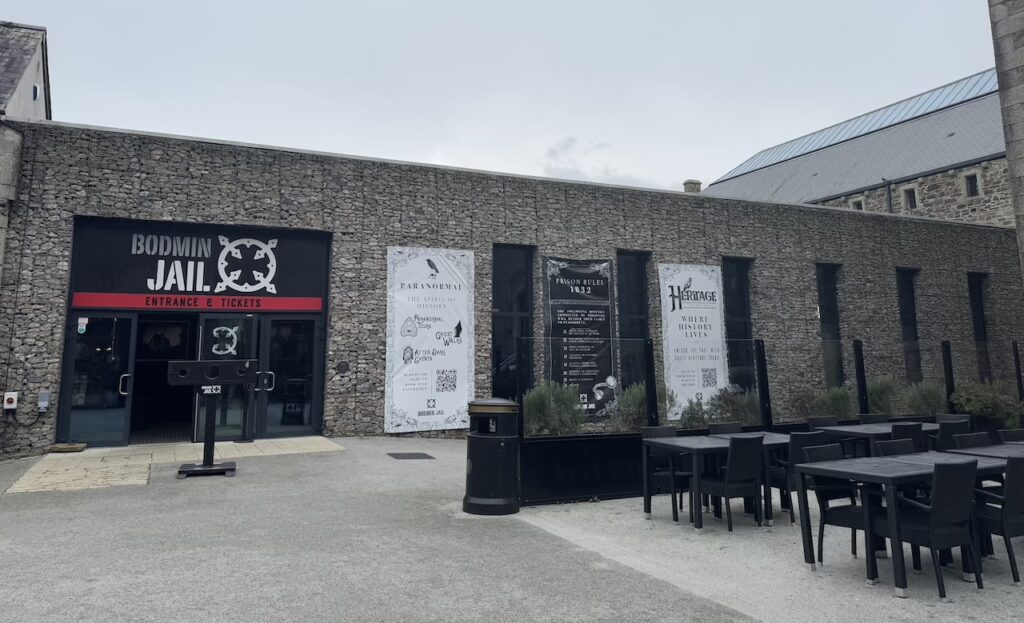
The interactive museum offers a peek into Cornish history and the societal situations that people lived through. This ghostly tour brings to life some of its most infamous residents. Selina Wadge is one of them. It was the Victorian era, and societal pressures meant Selina’s situation as an unwed single mother of two made her an outcast. A soldier promised to marry her if she disposed of her young disabled child. Selina, with neither money nor support, dropped her child down the well. This murder resulted in her execution in 1878. She is said to still haunt the halls of Bodmin Jail.
There is simply too much to see in the museum and it can get overwhelming. It preserves and displays many of its original facilities, including torture methods, original cells, and mysterious tunnels said to lead into town. A grim and unsettling part of the tour is the revelation of the details about the hangings. Bodmin considered itself progressive, and in this matter, cruelty and compassion overlapped.
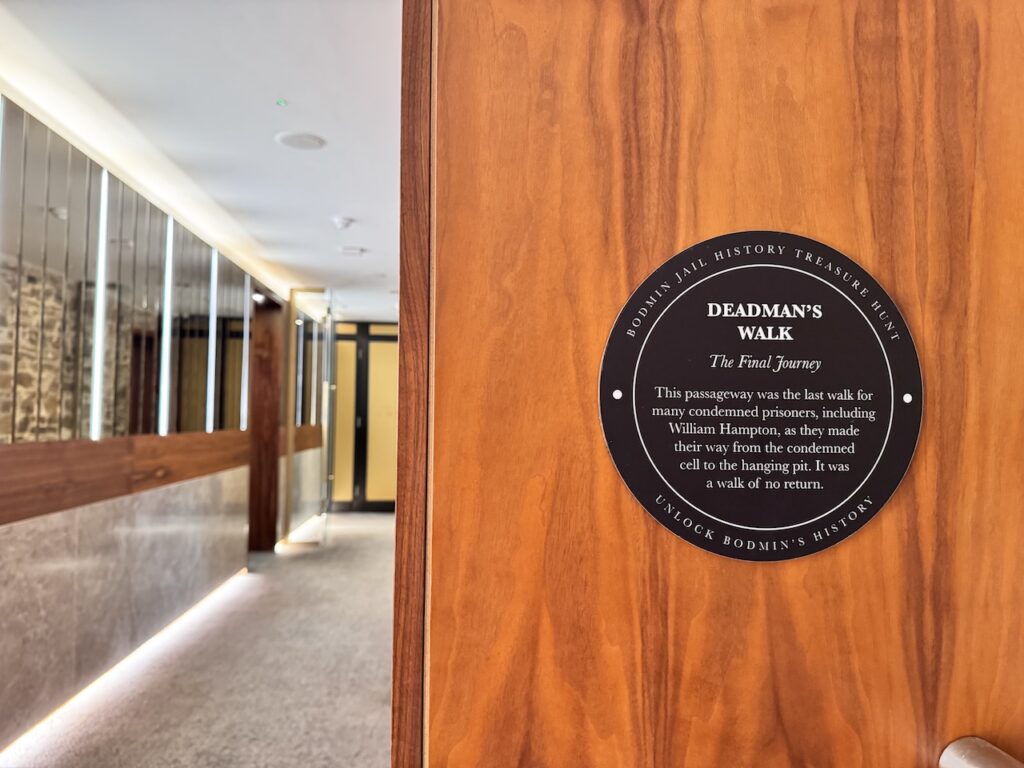

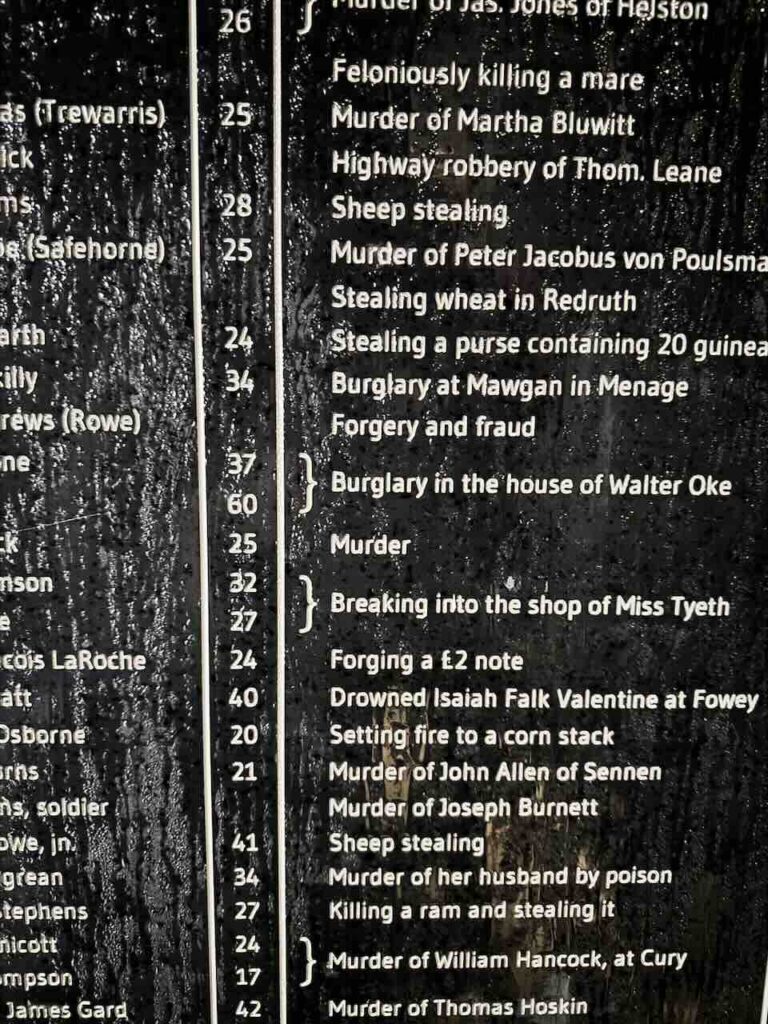
An execution during that period was a public spectacle, and could draw up to 25,000 spectators. Apparently, necks don’t instantly snap during a hanging. Prisoners can die a slow and painful death this way. Bodmin Jail was one of the first prisons to do a “measured drop” technique designed by William Marlwood who introduced a mathematical calculation for the rope length based on the prisoner’s weight and height. This way, death was instant, and depending on how you look at it, humane and merciful.
The museum has a chart on display that shows how you can compute this. This was too macabre even for me, so I didn’t bother to look.
Another morbid attraction is an immersive feature where you can experience how sudden a “drop” can happen in a hanging. This was the second-to-last stop of the tour. The end perhaps is the most bone-chilling: one of the original hanging pits complete with a noose and an imposing cross and coffin on display. I could not bring myself to take a photo of this.
Tom explains that after a hanging, doctors wait for an hour before making their way down the pit to retrieve the body. They do not lift the dead from their necks to show respect. Instead, they gently tie a rope around the waist to lift them out. They then inspect the bodies for signs of abuse, from unexplained bruising to broken ribs. If it’s in the affirmative, then the prison guards are let go. This is the last stop of the tour.
Once you step out, you’ll see the gift shop, and a few more steps hold the offer of hot chocolate at the Moor Cafe. After more than an hour of touring, it felt surreal to realize that a gift shop is just a few steps away from a real hanging pit.
Preservation or exploitation?
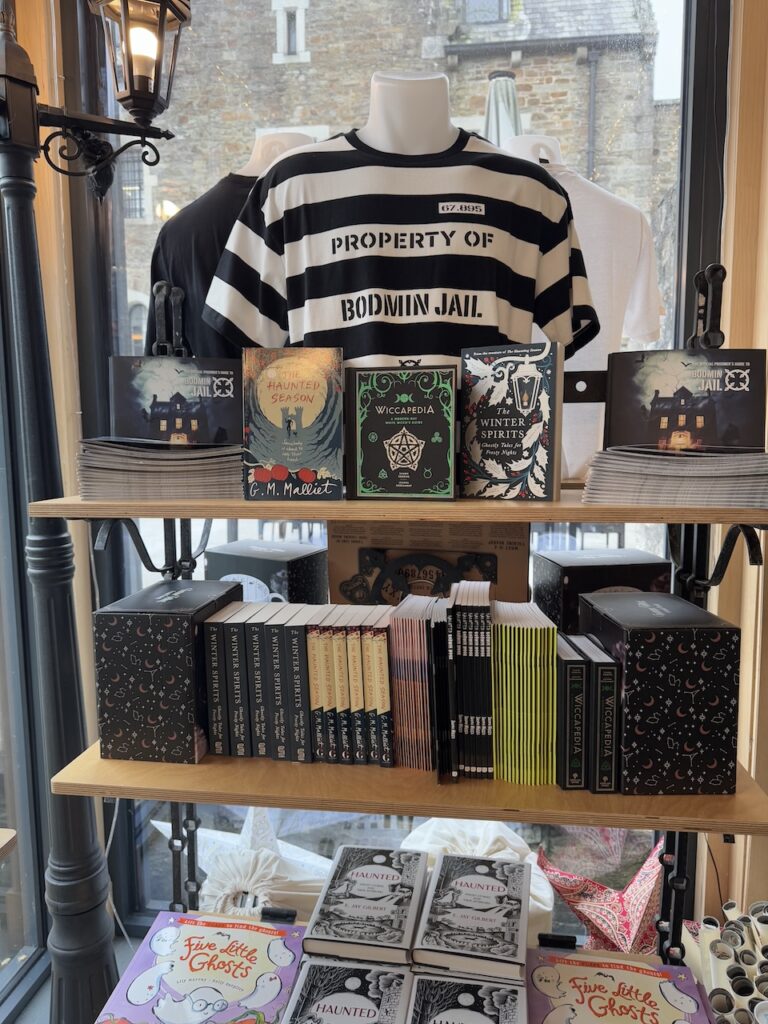
When the jail was built, it generated jobs for the town. A similar pattern seems to have emerged in the present. However, I pointed out to Wilson that turning a place of death and suffering into a luxurious destination could come across as controversial.
“I completely understand that perspective. But I don’t see it as profiting from suffering. I see it as preserving history. It’s important we share these stories so we don’t forget the past,” Wilson points out. “This hotel has also brought new jobs, helping the local economy. We source many of our ingredients and supplies from Cornwall, and we champion local produce.”
As society evolved, the jail slowly faded into obscurity. The last execution was held in 1909. The women’s section closed in 1911, followed by the civilian men’s prison block closed in 1916. By the 1920s, it did not have enough prisoners to justify its operations. It was officially decommissioned in 1927.
The property lived through multiple forms for much of the mid-20th century. It became a fishmonger and produce store, a garage repair shop, a badminton court, a popular nightclub, and even a venue for professional wrestling matches. It wasn’t until Tudor Hotels and a £65 million investment turned it into the hotel and state-of-the art interactive attraction it is now.
Call it macabre, unsettling, maybe even blasphemous. But the Bodmin Jail Hotel is an interesting and revolutionary way to keep history and stories alive. The jail is a significant part of Cornwall’s past, and to forget seems to be a crime worthy of punishment.
For more information, visit Bodmin Jail Hotel’s website.
Related story: The dual charm of Bohol’s Amorita Resort: Adventure in the sun, reset in the rain
Related story: New study finds adventure-first, experience-driven travel on the rise
Related story: Marriott is bringing its playful, millennial-focused brand Moxy to the Philippines

